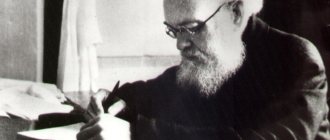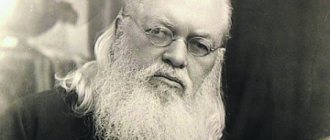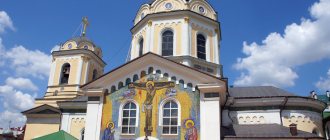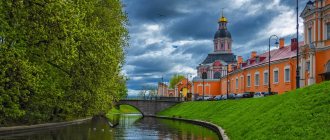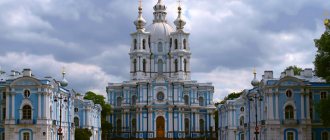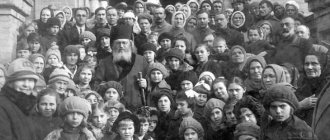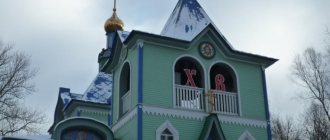Liberation
Every day, the future Archbishop of Crimea Luka independently came to the railway station, selecting the most seriously ill for operations. This continued until 1943, when many church political prisoners fell under Stalin's amnesty. The future Saint Luke was installed as Bishop of Krasnoyarsk, and on February 28 he was able to independently serve the first liturgy.
In 1944, the saint was transferred to Tambov, where he carried out medical and religious activities, restoring destroyed churches, attracting many to the Church. They began to invite him to various scientific conferences, but they always asked him to come in secular clothes, to which Luke never agreed. In 1946 the saint received recognition. He was awarded the Stalin Prize.
Relics
When Luke's grave was opened, the incorruption of his remains was noted. In 2002, Greek clergy presented the Trinity Monastery with a silver shrine for the relics of the archbishop, in which they still rest today. The holy relics of Luke of Crimea, thanks to the prayers of believers, exude many miracles and healings. People come to the temple all the time to venerate them.
After Bishop Luke was glorified as a saint, his remains were transferred to the Cathedral of the Holy Trinity in the city of Simferopol. Pilgrims often also call this temple: “Church of St. Luke.” However, this wonderful one is called Holy Trinity. The cathedral is located at the address: Simferopol, st. Odesskaya, 12.
New persecution
In 1937, the bishop was again arrested on charges of murder, underground counter-revolutionary activities and conspiracy to destroy Stalin. Some of his colleagues, arrested with him, gave false testimony against the bishop under pressure. For thirteen days the saint was interrogated and tortured. After Bishop Luke did not sign the confession, he was again subjected to conveyor interrogation.
For the next two years he was imprisoned in Tashkent, periodically subjected to aggressive interrogation. In 1939 he was sentenced to exile in Siberia. In the village of Bolshaya Murta, Krasnoyarsk Territory, the bishop worked in a local hospital, operating on numerous patients under incredibly difficult conditions. The difficult months and years, full of hardships and hardships, were worthily endured by the future saint - Bishop Luke of Crimea. The prayers he offered for his spiritual flock helped many believers in those difficult times.
Soon the saint sent a telegram addressed to the Chairman of the Supreme Council asking for permission to operate on wounded soldiers. Next, the bishop was transferred to Krasnoyarsk and appointed chief physician of a military hospital, as well as a consultant to all regional military hospitals.
While working at the hospital, he was constantly monitored by KGB officers, and his colleagues treated him with suspicion and distrust, which was due to his religion. He was not allowed into the hospital cafeteria, and as a result he often suffered from hunger. Some nurses, feeling sorry for the saint, secretly brought him food.
"Essays on purulent surgery"
In 1933, Luka returned to his native Tashkent, where his grown-up children were waiting for him. Until 1937, the saint was engaged in scientific activities in the field of purulent surgery. In 1934, he published a famous work entitled “Essays on Purulent Surgery,” which is still a textbook for surgeons. The saint never managed to publish many of his achievements, an obstacle to which was the next Stalinist repression.
Tashkent
During the civil war, the surgeon lived in Tashkent, where he devoted all his energy to healing, performing several operations every day. While working, the future saint always fervently prayed to God for help in completing the work of saving human lives. There was always an icon in the operating room, and a lamp hung in front of it. The doctor had a pious custom: before an operation, he always venerated icons, then lit a lamp, said a prayer, and only then got down to business. The doctor was distinguished by deep faith and religiosity, which led him to the decision to accept the priesthood.
Health A.V. Voino-Yasenetskaya's life began to deteriorate - she died in 1918, leaving four small children in the care of her husband. After the death of his wife, the future saint began to participate even more actively in church life, visiting churches in Tashkent. In 1921, Valentin Feliksovich was ordained to the rank of deacon, and then to the rank of priest. Father Valentin became the rector of the church, in which he always very lively and diligently preached the Word of God. Many colleagues treated his religious beliefs with undisguised irony, believing that the scientific activity of a successful surgeon had finally ended with his ordination.
In 1923, Father Valentin took monastic vows with the new name Luke, and soon assumed the rank of bishop, which caused a stormy negative reaction from the Tashkent authorities. After some time, the saint was arrested and imprisoned. A long period of exile began.
Chita
In 1904, the Russo-Japanese War began. V.F. Voino-Yasenetsky went to the Far East as a volunteer. In Chita, he worked at the Red Cross hospital, where he carried out practical medical activities. Heading the surgical department, he successfully operated on wounded soldiers. Soon the young doctor met his future wife, Anna Vasilievna, who worked as a nurse at the hospital. In their marriage they had four children.
From 1905 to 1910, the future saint worked in various district hospitals, where he had to conduct a wide variety of medical activities. At this time, the widespread use of general anesthesia began, but there was not enough necessary equipment and specialist anesthesiologists to perform operations under general anesthesia. Interested in alternative methods of pain relief, the young doctor discovered a new method of anesthesia for the sciatic nerve. He subsequently presented his research in the form of a dissertation, which he successfully defended.
The early years of Archbishop Luke Voino-Yasenetsky
Saint Luke, Bishop of Crimea (in the world - Valentin Feliksovich Voino-Yasenetsky), was born in Kerch on April 27, 1877. Since childhood, he was interested in painting, attending a drawing school, where he demonstrated considerable success. After completing the gymnasium course, the future saint entered the university at the Faculty of Law, but after a year he stopped classes, leaving the educational institution. Then he tried to study at the Munich School of Painting, however, the young man did not find his calling in this area either.
Desiring with all his heart to benefit his neighbors, Valentin decided to enter the Faculty of Medicine at Kiev University. From the first years of his studies, he became interested in anatomy. Having graduated from the educational institution with honors and received the specialty of a surgeon, the future saint immediately began practical medical activity, mainly in eye surgery.
Pereslavl-Zalessky
In 1910, the young family moved to the city of Pereslavl-Zalessky, where the future Saint Luke worked in extremely difficult conditions, performing several operations daily. Soon he decided to study purulent surgery and began to actively work on writing his dissertation.
In 1917, terrible upheavals began in the fatherland - political instability, widespread betrayal, the beginning of a bloody revolution. In addition, the young surgeon's wife falls ill with tuberculosis. The family moves to the city of Tashkent. Here Valentin Feliksovich holds the position of head of the surgical department of the local hospital. In 1918, Tashkent State University was opened, where the doctor teaches topographic anatomy and surgery.
